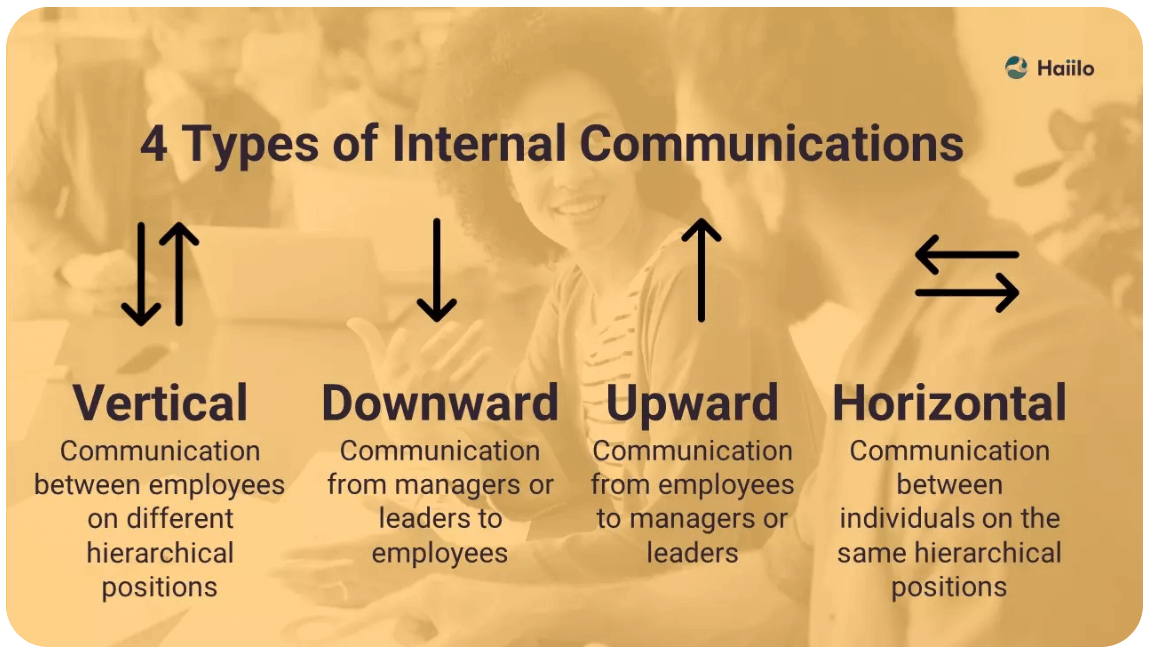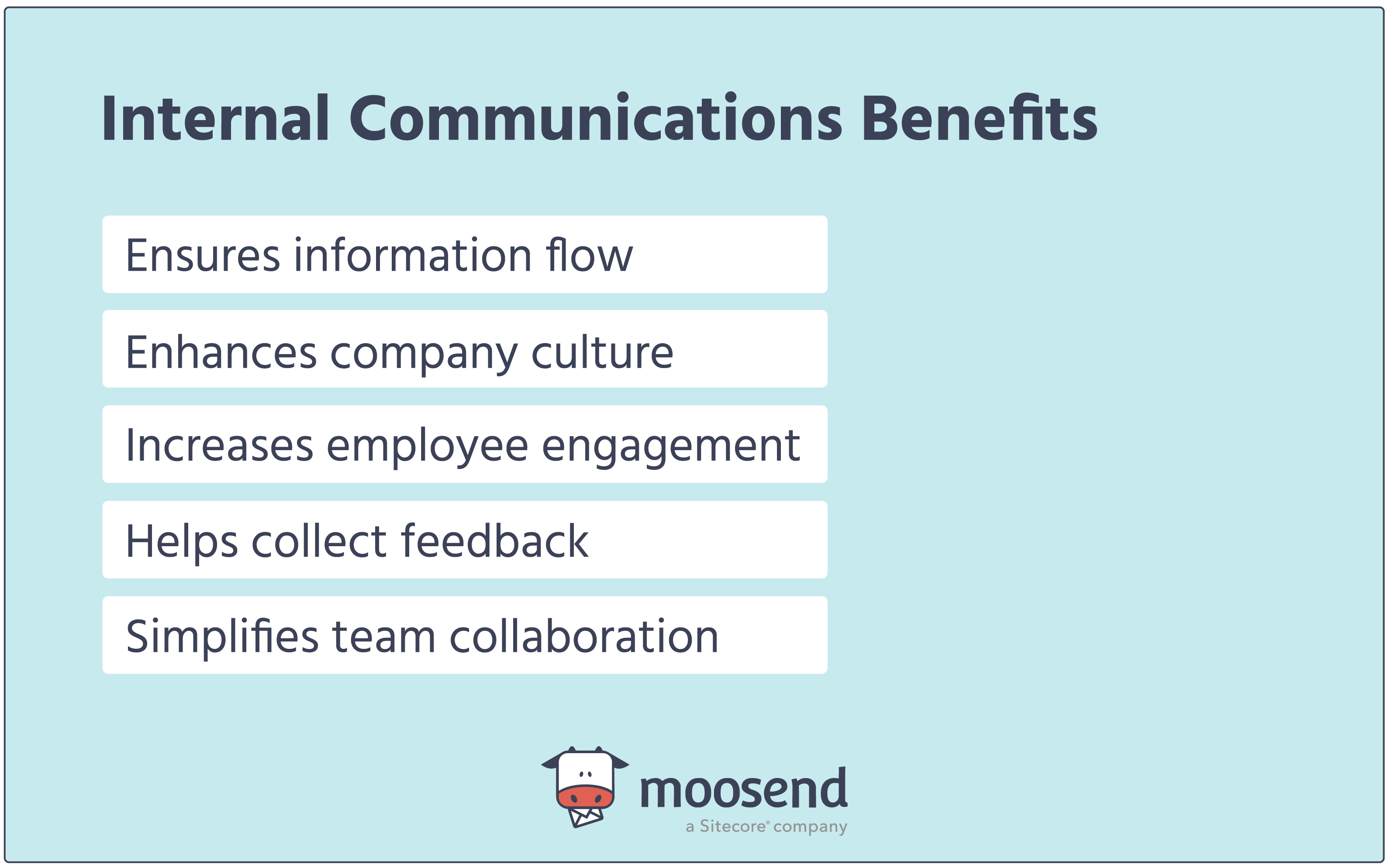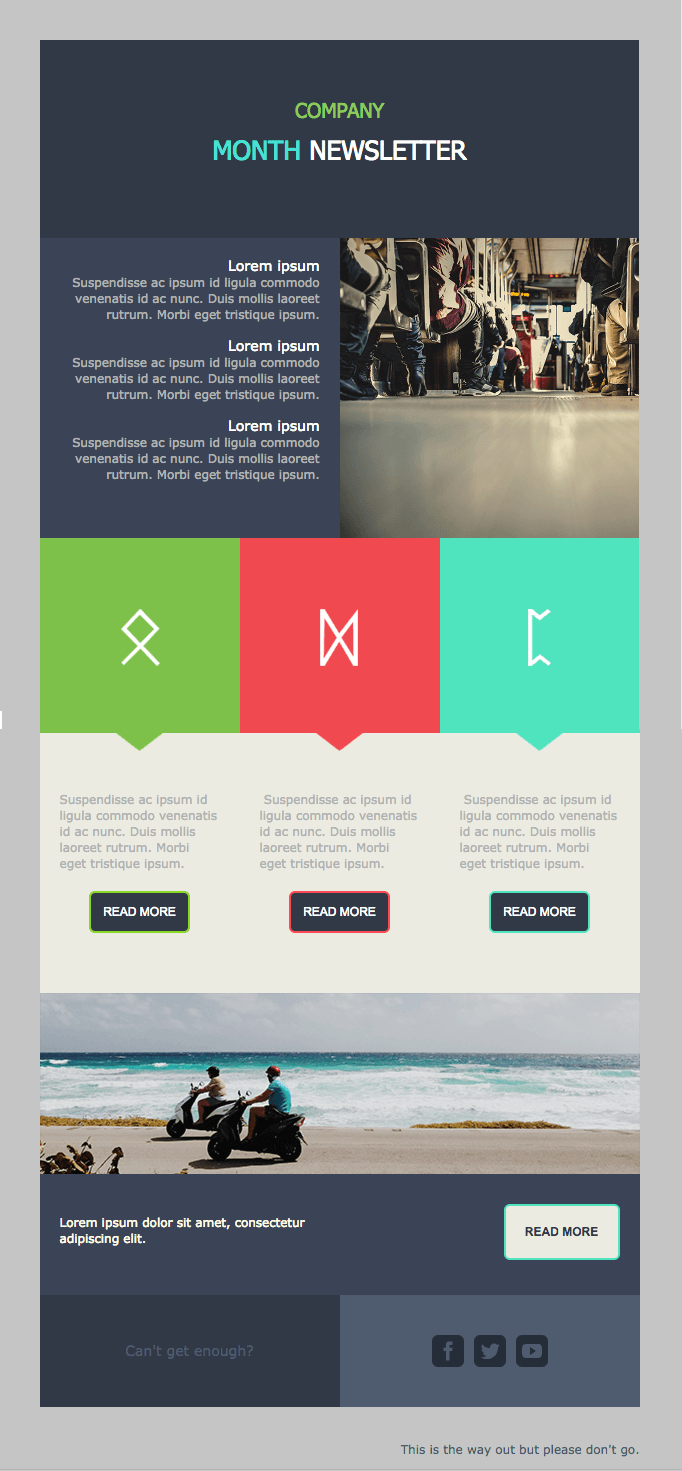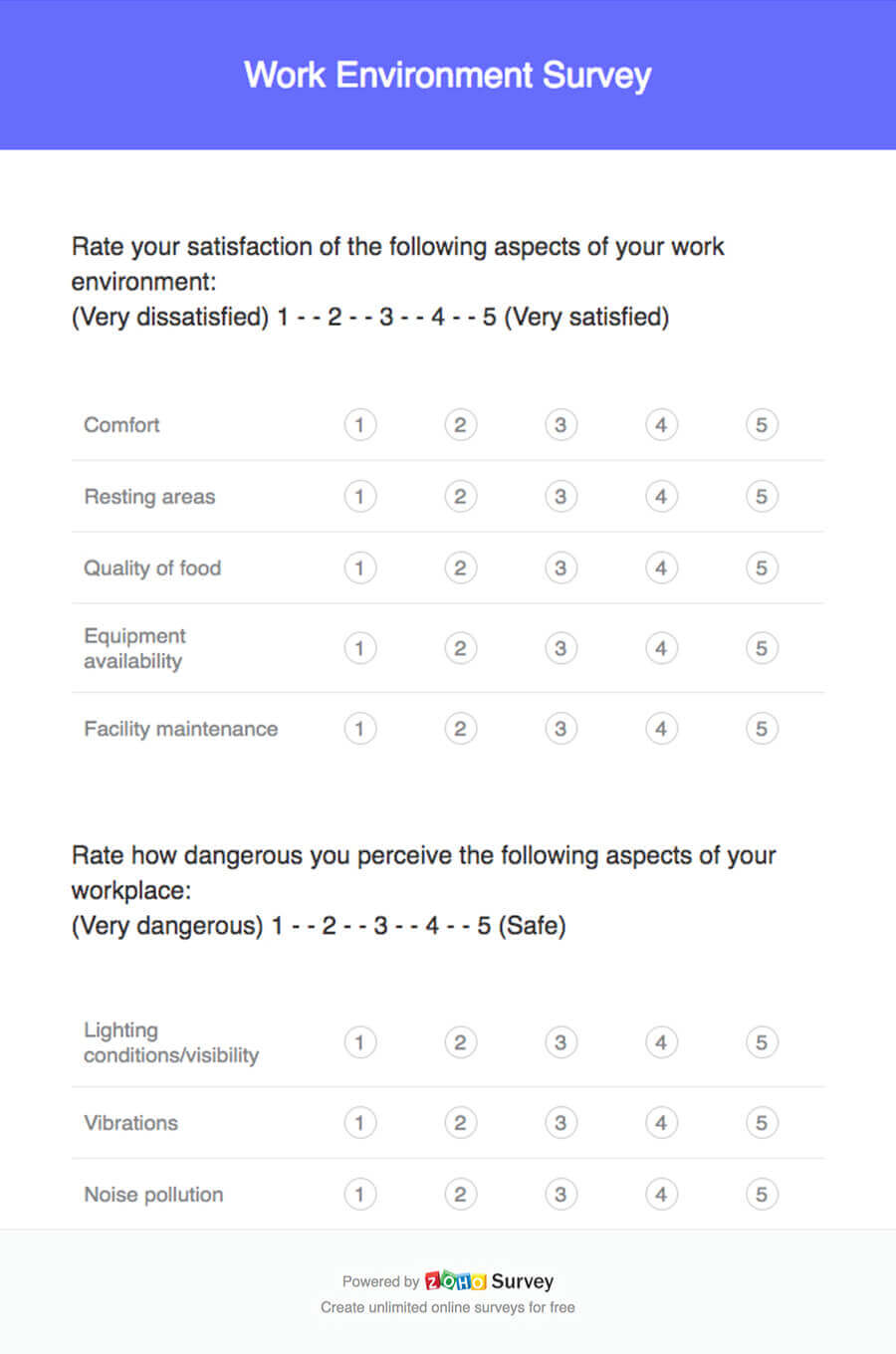
Internal Communications: What is, Benefits & Tips [2024]
Internal communications are an integral part of every business that wants to keep its employees connected, share knowledge, and motivate them to achieve their common goals.
Effective communication ensures that your operations run smoothly and the participants are well-informed about company culture, initiatives, issues, events, etc.
In this post, we will see:
- The definition of internal comms
- What are the main types
- Who is responsible for them
- Why they are vital for a business
- Essential tools to use
- Best practices to improve your plan
What Are Internal Communications?
In a nutshell, internal comms are a process that aims at keeping all employees and teams informed through verbal, written or digital means. According to statistics, 44% of employees feel that management doesn’t provide enough information to help them understand their shared goals and direction.
Thus, an effective internal communications strategy with a clear information flow is all you need to provide them with a better understanding of your company’s goals, strategy, and vision.
Internal Comms Vs. Public Relations
When we talk about internal comms, public relations usually comes to mind. However, these two terms have different meanings and shouldn’t be confused with each other.
As mentioned above, internal communications are about sharing information within your organization. Public relations, on the other hand, are about distributing information outside your company to influence public opinion.
Internal Communications Types
Based on the hierarchical position of the individuals, we can distinguish between 4 different internal comms types.

Now, if we further expand these broader categories, we find some distinct types of internal comms:
- Leadership (top-down): inform staff about your strategy and goals. Usually scheduled and delivered in a more formal tone. Examples include company news, announcements, awards, etc.
- Change comms: any changes should be communicated company-wide, whether they concern administration, office openings, compliance changes, or new processes,
- Peer-to-peer: communications between individuals on the same or different teams. This is done through project management platforms or social networks like Slack or Microsoft Teams.
- Information sharing: this is the most common form of communication to ensure smooth operations. Examples include organizational information and messages sent from HR and IT.
- Company culture comms: meant to boost employee engagement, including company mission and values, staff achievements, events, etc.
- Crisis communications: any message sent during an emergency to ensure staff safety. Usually, these comms concern natural disasters affecting the workspace, information leaks, cyber-attacks, disruptions, fraud, etc.
Now that you know the types, it’s time to find out who will be in charge of creating and carrying out your internal communications plan.
Who Is Responsible For Internal Comms?
The best way to develop an effective internal communications plan is to find the right person to help you. In this case, an internal communications manager is the most suitable person to perform the task along with your senior managers.
A skilled manager with excellent writing, interpersonal, creative, and communication skills will be the right fit for your company to handle.
Among others, a great manager will:
- Ensure consistency in the messages sent to team members to avoid an information overload
- Collaborate with the corporate communications manager
- Create content for various communication channels, such as email, social media, staff intranet, etc.
- Communicate ideas, projects, and company goals to employees and stakeholders
- Inform executives about specific issues either through face-to-face meetings or emails
- Handle potential crises to maintain company reputation and perception
- Use various communication channels to reach the internal audience
These are some of the tasks an internal comms manager needs to perform to achieve your communication goals.
For more information, check out this internal communication manager job description to understand what your manager needs to do daily.
Benefits Of Internal Communications
Now that we defined internal comms, it’s time to see why it is crucial to create an internal comms strategy for your organization.
As you can see below, the benefits can be summarized everything in five key points:

Now let’s look closely at them to help you develop a solid internal communications plan later.
1. Ensures Information Flow Within Your Organization
According to data, 75% of employees can’t access corporate email or intranets, making it impossible to receive crucial information about their organization.
These employees are usually the frontline of a company, meaning they interact with customers the most. Being unaware of what happens in their work environment will not only hinder customer experience but will unmotivate them.
Finding different communication mediums to reach them will help you communicate goals, changes, and news company-wide and keep everyone on the same page.
2. Enhances Company Culture & Engagement
By company culture, we refer to the values and goals that members across an organization share. In a sense, it is the personality of your company and influences the way your staff interacts with you.
Strong company culture will keep your workforce engaged and motivated to perform their best. However, to keep employee engagement high, you need to invest in good internal communications.
Sending company culture messages will not only strengthen engagement and enhance the employee experience but also make the individuals feel part of the company.
Consequently, keeping everyone in the loop will make them more productive, enhance employee retention and increase the sense of affiliation between them and their fellow team members.
3. Helps You Collect Feedback
Collecting customer feedback is one of the best ways to improve your operations. Employee feedback works likewise.
Listening to what your workforce has to say, their concerns, and suggestions will allow you to improve the work environment. As a result, you will make them feel valued and build trust.
Moreover, encouraging two-way communication through human resources and your internal comms manager will help you collect more in-depth feedback about your organization.
However, as most employees prefer sharing information through anonymous surveys, you need to have established a high level of trust to make them feel comfortable talking to leadership openly.
4. Simplifying Team Collaboration
Being on the same page with your team members and exchanging information is essential to work effectively towards a common goal.
Now if you apply this company-wide, you will manage to boost collaboration between different departments.
Having the same business goals and being well-informed about them will save time and prevent potential miscommunication between teams and individuals.
7 Internal Communication Tools
Now that we have explored the importance of internal comms for your business, let’s see some great tools and channels you can use to communicate your messages effectively.
1. Internal Newsletters
Email has always been one of the most popular means of communication. Not only is it simple, but every employee can access it through a desktop or mobile device.
Depending on the type of communication, your emails can be in plain text or rich HTML format. The former is perfect for peer-to-peer or urgent messages that require no images.
However, to deliver something fancier to your internal audience, you should consider creating a rich email. Below, you can see a part of an internal communications email sent to employees during the Xmas holidays.

While we can’t share the content, you can see how Sitecore created a beautiful message with a holiday visual to engage employees and share events planned for December.
Similarly, you can create beautiful newsletters for your employees. Rich emails are perfect for engaging your staff, especially for company culture and information sharing. To streamline employee communications, you can use an email marketing tool.
Platforms like Moosend will help you handle your internal comms, offering you a user-friendly email editor to create plain text and rich newsletters for your staff.
Below, you can find some pre-made email templates you can easily customize to match your branding and save valuable time.
Internal Communications Email Newsletter Templates
Moosend’s template library contains responsive email templates you can choose from for any occasion, including holiday designs to engage your internal audience.
Here is a business email design you can use for information comms or weekly/monthly newsletters:

You can use the above example for various purposes. To discover more designs like this, check our professional business email templates.
Similarly, if you want to engage your staff during the holiday season, you can use one of the Christmas templates to wish employees and their families happy holidays.

To send your messages to your employees, all you have to do is sign up for a Moosend account and then find the paid plans that best suit your business.
You can use the 14-day free trial to test the features. Apart from the email builder, you can also use the segmentation tool to group your employees based on their roles to deliver them the right messages every time.
For instance, in larger organizations with a diverse workforce, you can use the personalization and segmentation features to celebrate specific holidays with them and show inclusivity.
2. Intranet
Company intranets are also an essential part of internal communications. You can easily share information between departments and employees in a safe and controlled environment.
Moreover, one of the advantages of an intranet is that people can connect to it from different locations. This way, you don’t have to worry about remote workers.
Among others, a company intranet will allow employees to:
- Get company resources
- Request holidays
- Check payslips
3. Mobile App
Since your staff already has a mobile device, using a mobile intranet app is the best way to reach everyone, no matter where they are.
As mentioned above, frontline employees may find it challenging to access company emails and intranets through desktop.
However, a mobile version will allow them to engage with the company regardless of location and even check essential details, such as customer data, in real-time to streamline their work.
4. Collaboration Tools
To keep your teams productive, you need to ensure they can collaborate effectively. To do that, you can use collaboration tools to streamline this process.
Some of the most popular ones include:
- Shared calendars
- Instant messaging apps
- Video conferencing tools (especially popular during the pandemic)
- Cloud storage and file sharing
- Project management applications, such as Trello
The above will boost employee communication and allow them to collaborate efficiently to achieve their goals.
5. Employee Surveys
Collecting feedback from your staff is vital to improve your operations and detect problems that may lead to serious issues for your business.
Setting up a survey is pretty straightforward. All you need to do is set your survey goal and ask the right questions. Keeping your survey anonymous will encourage employees to share their honest opinions.
However, if you need more in-depth feedback, you need to have two-way communication with them.

Here are some questions you can include in your survey to measure employee satisfaction:
- Are you satisfied with our company culture?
- Do you feel connected to your team member?
- How happy are you with your company benefits?
- Do you feel valued by your manager?
6. Social Networking Platforms
Slack and Microsoft Teams are two of the most popular social networking apps that businesses use to keep in touch with each other.
Both will offer the ability to instant message individuals or groups, have video calls, share files, and more. Moreover, people can also set push notifications to receive activity updates to be always informed about what is happening.
Tools like these are easy to master, and your staff can use them from any device to stay connected and enhance productivity.
If you want to create a Slack workspace for your business, you can check this guide.
7. Company Blog
Sharing company news is possible through newsletters created by your internal comms team. However, if you need to give your employees a place to find out the latest news from the CEO and senior managers, you can create an internal blog.
This communication channel will allow workers to access the information at their own pace, read the content, digest it, and even leave a comment if something isn’t clear.
The best part of this medium is that you can set up an RSS feed and deliver the posts to your employee’s inbox.
Moosend allows you to create your RSS feed to keep your internal audience in the loop. You can build it manually or use one of the available RSS newsletter templates to save time and effort.
To send your RSS feed, don’t forget to register for a Moosend account and select the plan that best suits your needs.
5 Internal Communication Best Practices
Now that you know the essentials of internal comms, let’s take a look at some great best practices that you can use to improve your new or existing plan.
1. Segment Your Employees
Segmentation is a practice that eCommerce businesses use to group their audience based on specific criteria, such as demographics, psychographics, and more.
The purpose is to divide a large audience to engage it more effectively. Similarly, you can use this method to group your internal audience based on:
- Team and position
- Location
- Seniority
- Gender
For example, if you are based in the US and have remote workers in the UK, you can create a specific campaign to celebrate a specific occasion with them.
2. Use Appropriate Language
Regardless of the type of communication, you and your internal communications team need to use appropriate language.
This doesn’t mean that you have to be strictly formal. You can use various tones depending on the occasion but be careful of the terms you use.
The safest way is to use gender-neutral language to communicate your messages effectively without risking making your staff feel uncomfortable.
Moreover, since miscommunication can happen at any given time, use straightforward language to communicate your message.
3. Use Different Channels To Reach Your Staff
Reaching everyone in an organization may sound like a difficult task. However, if you discover the channels they use to receive company messages and create an internal communication strategy around them, you will ensure that your messages come through.
For example, you can start with internal newsletters and then post your announcements on Microsoft Teams to maximize reach. Then, you can use the company mobile app, create a social media post, or post on the general slack channel.
Whatever you do, knowing which channels your employees use will help you reach everyone company-wide.
4. Avoid Communication Overload
Consistency is one of the most important things you need to maintain while sending internal messages to your employees.
If you post different things on several channels simultaneously, you risk overloading your staff with notifications and messages.
To avoid that, make sure to deliver everything on time. For example, you can choose specific dates and times to communicate different things.
If you want to send them five internal newsletters, do not deliver them all at once. If there’s no time sensitivity, schedule your messages for different days to ensure everyone sees them.
5. Collect Feedback and Optimize
To ensure your process runs smoothly, you need to collect feedback from your recipients.
The easiest way is to create a survey with relevant questions and send it to everyone.
You can use feedback campaigns to collect the information you need to optimize your strategy and avoid common problems that may disrupt employee communication.
Streamlining Internal Communications
Good communication is key to achieving your business goals more efficiently, building stronger relationships with your staff, and keeping everyone in the loop.
Before you and your internal comms manager create your plan, look at the types of communication you need and the tools you can use.
Moosend, for instance, is a great platform to help you power up your internal newsletter communications. You can easily sign up for a free account and try out its capabilities. Then, choose the plan that suits you best and get started.
FAQ
Discover the answers to common questions:
1. What is the difference between internal and external communications?
Internal communication is all about communicating with members of your company through various channels (intranet, internal newsletters, etc.). On the other hand, external communication is about communicating with people outside your organization (campaigns, press releases, etc.).
2. What are the best internal communications tools to use?
Some of the best internal communication tools you can use include internal newsletters, company intranet, dedicated mobile app, collaboration tools, social networking platforms, and surveys.
3. Who is responsible for internal communications?
The internal comms team and your dedicated manager are responsible for creating a plan and running your internal communications company-wide.
4. Why are internal communications important?
Internal comms will ensure information flow, enhance your company culture, build trust, and increase productivity between teams and departments.
5. What are the main types of internal communications
There are four main types of internal communications: vertical (between employees in different positions), top-down (from managers to employees), bottom-up (from employees to managers), and horizontal (employees in the same positions).




 Published by
Published by

